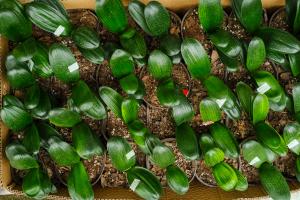Is Water Potential Higher or Lower in Drought Stressed Plants?
Drought stress is a serious environmental pressure that can have a significant impact on plant growth and survival. When faced with limited water availability, plants must adjust their water uptake and use strategies to maintain their internal water balance. One way they do this is by regulating their water potential. But does water potential become higher or lower in drought stressed plants? Let's investigate.
Understanding Water Potential
Water potential is a measure of the energy status of water in a system. It is a function of several factors, including solute concentration, pressure, and gravity. Water always flows from high potential to low potential, meaning that water moves from wetter areas to drier areas. In plants, water potential is predominantly determined by solute concentration, which affects the water potential of the soil, the plant cell walls, and the plant's internal water storage structures.
The Effect of Drought Stress on Water Potential
When a plant experiences drought stress, its water potential decreases. This is because the soil becomes drier, and the concentration of solutes in the soil solution increases. As a result, the water potential of the soil decreases, making it more difficult for the plant to acquire water. Additionally, the plant itself may lose water through transpiration, further lowering its water potential.
However, drought-stressed plants can also adjust their water potential in response to the changing environmental conditions. One way they do this is by accumulating solutes within their cells, which lowers their water potential and allows them to retain more water. Another strategy is to close their stomata, which limits water loss through transpiration, conserving water and increasing their water potential.
Variations in Plant Water Potential
It's important to note that not all plants respond to drought stress in the same way. Some plants are adapted to arid environments and have mechanisms that allow them to maintain relatively high water potential even under drought conditions. These adaptations may include deep root systems, water storage structures, and efficient water usage strategies.
Other plants, however, may be more susceptible to drought stress and have lower water potential even under normal conditions. These plants may have shallow root systems, low water storage capacity, and high transpiration rates, which make them more vulnerable to drought stress.
The Importance of Water Potential in Plant Growth and Survival
Water potential plays a vital role in plant growth and survival. When a plant's water potential is too low, it can lead to wilting, reduced growth, and even death. On the other hand, when a plant's water potential is too high, it can cause the cell walls to rupture, leading to tissue damage and reduced growth.
By regulating their water potential, plants can maintain their internal water balance and survive under a range of environmental conditions. Understanding how water potential varies in different plant species and under different drought conditions can help us develop strategies to improve crop productivity and conserve water resources.
Conclusion
In conclusion, water potential decreases in drought-stressed plants due to changes in the soil solute concentration and plant water loss. However, some plants have adaptations that allow them to maintain relatively high water potential under drought conditions. Water potential plays a critical role in plant growth and survival, and understanding how plants regulate their water potential can help us develop strategies to mitigate the impacts of drought stress on agriculture and natural ecosystems.

 how many times do yo...
how many times do yo... how many planted tre...
how many planted tre... how many pine trees ...
how many pine trees ... how many pecan trees...
how many pecan trees... how many plants comp...
how many plants comp... how many plants can ...
how many plants can ... how many plants and ...
how many plants and ... how many pepper plan...
how many pepper plan...





























